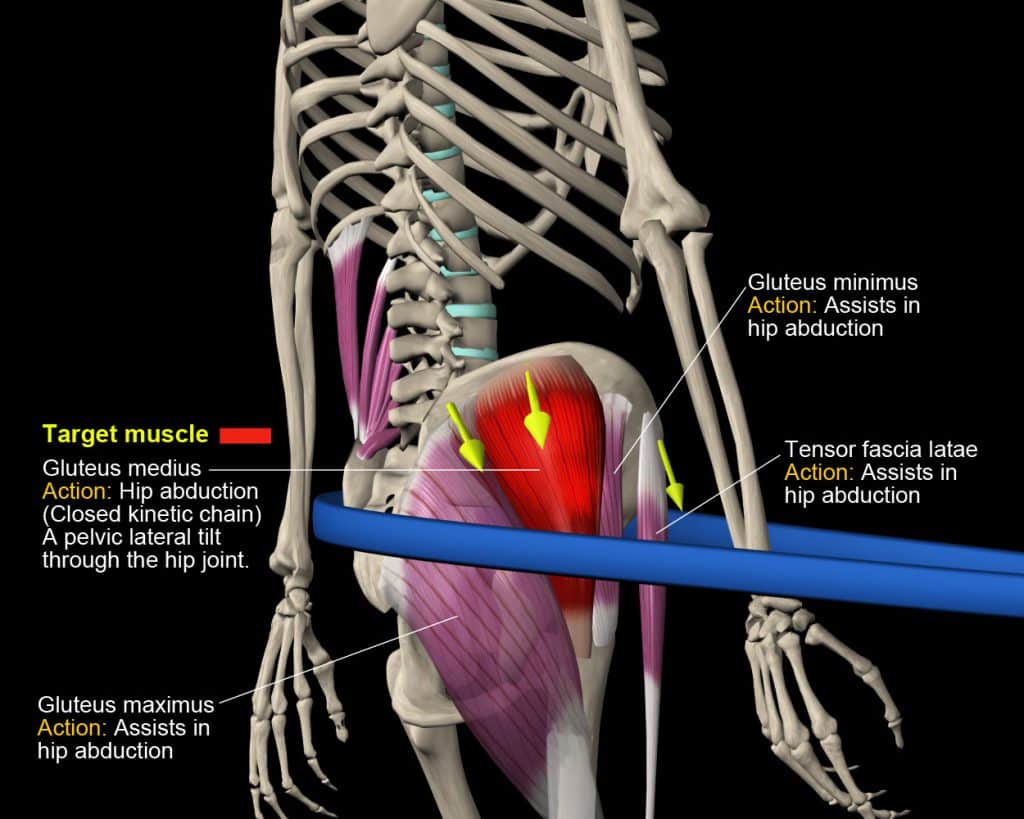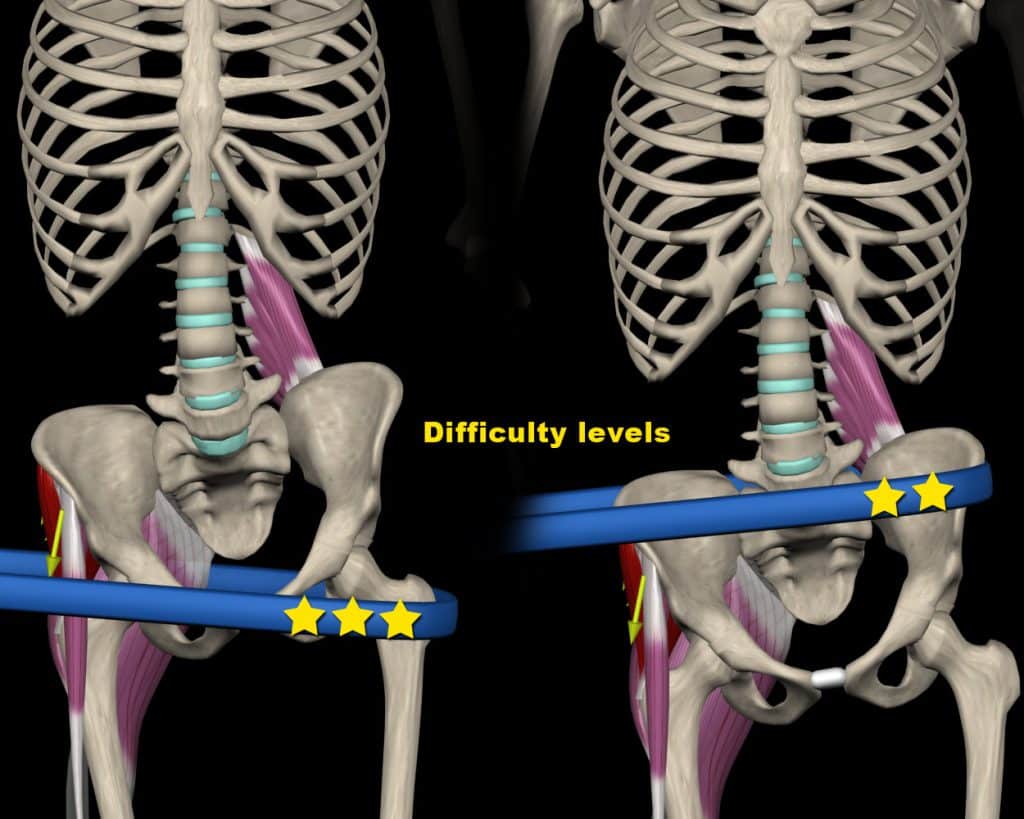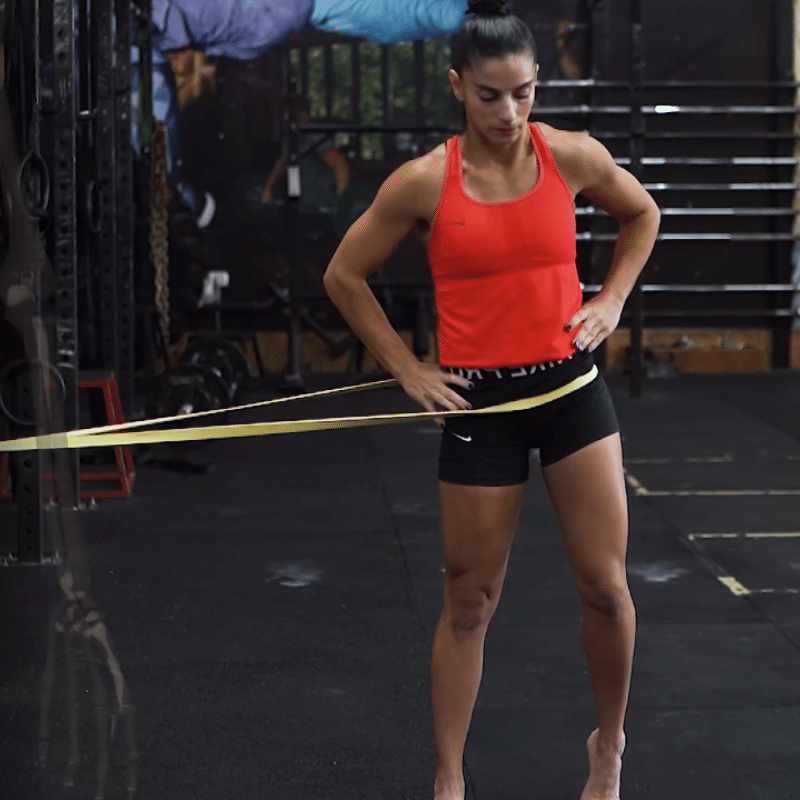Are you seeking strong hip abductor muscles and a stable pelvis? Want to avoid knee valgus, ITB syndrome, and hip or lower back problems? The Hip Hike Exercise is a straightforward yet highly beneficial movement when performed correctly. This exercise specifically targets and strengthens the hip abductor muscles. These muscles play a crucial role in maintaining pelvic stability and are involved in activities such as walking, running, climbing stairs, and any movement that requires leg abduction (moving away from the body’s midline). You can also prevent common knee pain issues by strengthening your hip abductors.
How to perform this exercise correctly?
- Stand sideways with a resistance band around your body, resting on one hip.
- Place your entire body weight on the inside leg, which is farther from the band (in this video, it’s the right leg).
- The other leg touches the floor lightly for stability. Alternatively, you can stand on a raised platform with one leg while the other hangs off. If you initially struggle with balance, you can hold onto something stable for support.
- The resistance band pulls the pelvis inwards.
- Push the pelvis out against the band until the left side of the pelvis is higher than the right side. This movement engages the hip abductors, including the gluteus medius, and creates lateral flexion.
Anatomy analysis of the hip hike exercise
The hip hike exercise primarily targets the hip abductor muscles, with the main muscle being the gluteus medius. The gluteus medius plays a crucial role in pelvic stability and is responsible for the leg’s abduction away from the body’s midline. Assisting the gluteus medius in the hip hike exercise are the gluteus maximus, tensor fascia latae, and gluteus minimus. These muscles work together to provide additional support and strength during the movement.
From a posterior view, we can observe the quadratus lumborum, which assists in pelvic lateral flexion. The quadratus lumborum is involved in stabilizing the pelvis and aiding in the lateral movement of the hips. You engage and strengthen these key muscles by performing the hip hike exercise, promoting hip abduction, pelvic stability, and overall lower body strength.

You can change the load by changing the band’s position on the pelvis and by stretching the band.

How can you determine if your hip abductor muscles are lacking strength?
The Trendelenburg sign is a physical examination finding seen when assessing for any hip dysfunction. A positive sign is defined by a contralateral pelvic drop during a single-leg stance. This finding usually indicates weakness in the hip abductor muscles (gluteus medius and gluteus minimus).
How would this sign look during the gait cycle?
During single-leg support, the pelvis will rise ipsilaterally when we stand on the weak leg. Meaning we will see a dropping of the pelvis toward the contralateral side. Because the weak abductors cannot maintain the pelvis in a level plane, the trainee falls towards the good side and simultaneously leans the torso towards the weak side to maintain balance. This type of gait is known as the Trendelenburg gait.
Want to know more? To gain full access to advanced knowledge on over 700 Strength Training Exercises, subscribe to the Muscle & Motion Strength Training app today. When you understand concepts better, you can explain and teach better! The Strength Training App makes absorbing the material so much easier because it’s based on cognitive learning; watch and learn! You can always visually show your clients how an exercise should be done, and you can always go back and watch the videos repeatedly!
At Muscle and Motion, we believe that knowledge is power, and understanding the ‘why’ behind any exercise is absolutely essential for your long-term success.
Let the Strength Training App help you achieve your goals! Sign up for free.


